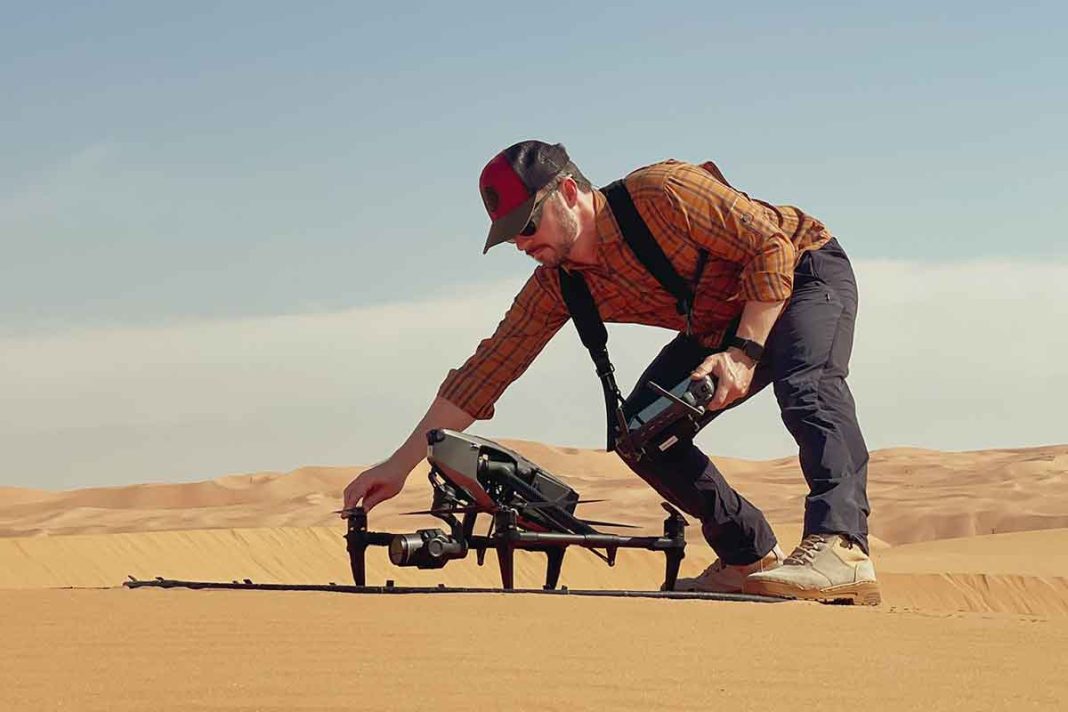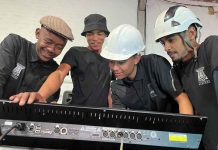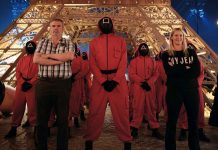Drones are increasingly becoming a regular part of live events throughout the Middle East, with large swarms often combining with fireworks as well as more traditional audiovisual mediums to produce ever more spectacular shows. Alongside the rapid development in terms of drone shows, drones are also being utilised when it comes to capturing the region’s live events on film, with the quickly evolving technology offering new and innovative angles and making possible the kind of footage that would previously have required the use of a helicopter or, in some cases, wouldn’t have been possible at all.
Standing at the forefront of this aerial filming revolution is CHOPPERSHOOT, with the company boasting extensive experience in filming for live events as well as the TV and film industry via both helicopter and drones. Catching up with TPiMEA as a busy events season was winding down, Managing Partner, Liam Allen, and Business Development Manager, Mouna El Alaoui, talked through some of the most often overlooked considerations that should be accounted for when incorporating aerial filming into an event.
“The biggest source of uncertainty among clients tends to be around permits,” began Allen, casting a knowing look towards El Alaoui. “There are plenty of misconceptions in that space, but one of the most common we tend to encounter is the belief that you can fly a drone without a permit in the UAE as long as you’re in a ‘green zone’. Of course, that’s not the case, and every location that you want us to fly a drone in requires a full set of permits and approvals.”
CHOPPERSHOOT has offices in Dubai, Abu Dhabi and Saudi Arabia, as well as a global presence in Barcelona, Spain, and every country the company operates in has different requirements when it comes to regulations. “We have a dedicated team especially for applying for permits,” El Alaoui revealed. “Also, maintaining relationships with all the authorities in the regions where we operate is extremely important so if there’s going to be a change in policy that could affect us, we know about it.”
Location choice is another factor that requires careful consideration. “Let’s say you’re shooting a project at Burj Khalifa, for example,” Allen proffered. “You might have all the necessary permits and approval to shoot the building, but you also need to be covered for its surrounding areas – and when you’re in the middle of Downtown Dubai, there are a lot of notable attractions packed into a relatively small area that you need to be covered for.”
The issue is brought into even greater focus in a city such as Dubai, where every major building has its own in-house security team. “Even with all the correct permits and permissions, we could still face resistance from building security staff who are not familiar with what we’re doing,” Allen commented. “We do a lot of work around Emaar properties and that is always fantastic because their security teams are so well-versed in what we do.”
One limitation that is becoming increasingly common is the need for drones to be fitted with a tracking device that reports their exact location to the Civil Aviation Authority. “If we were to stray outside of the pre-agreed area, the tracker would alert the authorities and our flight would be cancelled automatically,” Allen revealed. “It’s a balancing act as a pilot to make sure that you’re getting the best shots for the director but also flying safely and staying within the agreed flight zone.”
CHOPPERSHOOT was recently engaged to capture the action at Untold Dubai, and the added challenge of filming an event with tens of thousands in attendance brought with it some extra considerations than would be required for a film or TV shoot. “We used small drones under 250g in weight, which meant that we were able to fly over the crowds without risking anybody being hurt,” Allen recalled. “Those smaller drones have a very limited flight time, so we required multiple drones taking off in staggered timeslots to capture the whole event.”
With so many people on site and several drone flights occurring concurrently, preparation and constant communication are vital for a project such as Untold. “Ensuring that everybody knows exactly what is going to happen throughout the night is essential,” El Alaoui stated.
Looking ahead, Allen believes that tightening regulations will provide the main challenge in the future. “Everything comes down to regulations,” he concluded. “As more and more companies come on the scene, restrictions are going to get tighter to ensure that only the people who have the experience and expertise and who are working in the right way will be able to fly.
“As a well-established company in the field, we hope to work with the authorities to help create plans that work for everybody and keep the airspace running as efficiently as possible.”
Photos: CHOPPERSHOOT




